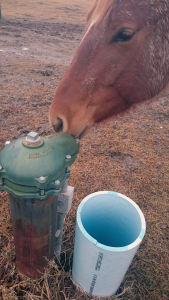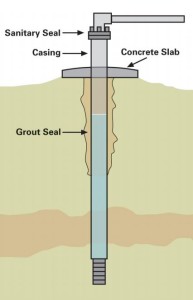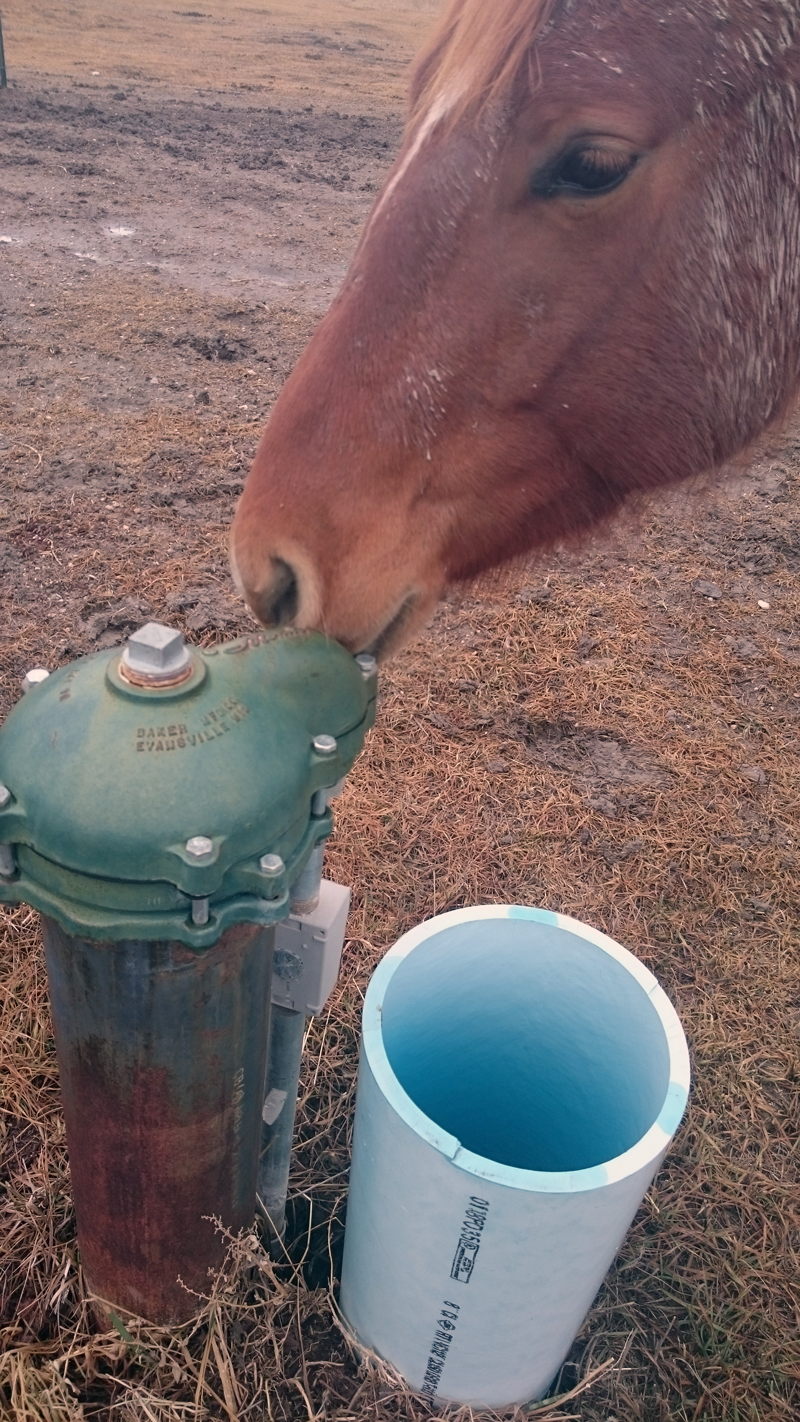 Our service team recently made a new friend while visiting some rural jobsites.
Our service team recently made a new friend while visiting some rural jobsites.
While this mare makes for a cute photo-op, it’s an important reminder that many well owners don’t protect their wellheads properly from potential ingress of contamination to their own water supply as well as the entire aquifer that it is connected to.
Owning a well makes you the proprietor of your own water utility. You are responsible for the quality of your own water supply, and also for protecting it’s source. Without vigilant wellhead protection, aquifers can become contaminated, and entire communities and geographic areas will suffer.
The most common wellhead protection failures that I see are no seal, or a compromised seal on the cap, improper grouting, and no perimeter ingress protection. It is distressing to report how frequently my own team and our dealers report encountering similar situations.
The wellhead in this picture is inside a horse paddock and has no cap seal, casing grout, or perimeter protection. Additionally, the secondary bore (access to stop & waste valve below the frost level) is uncapped and way too close to the water well itself. The owner was genuinely surprised when bacterial testing of the water revealed coliforms, fecal coliforms, and Iron related bacteria that weren’t present last year. Obviously, surface water is bringing soil, feces and other contaminants down the side of the casing and eventually down into the immediate aquifer. Under the right circumstances, this can possibly contaminate the greater area of the aquifer.
The following principles were originally developed at the University of Georgia. Using these guidelines will help ensure the safety of your well water and are available as a .pdf download here: http://spock.fcs.uga.edu/ext/pubs/hace/HACE-858-01.pdf
1. Proper Well Siting
Safety, rather than convenience or economy, should be the #1 priority when selecting a location for your well. Ideally, a well should sit high in the landscape so that surface water will drain away from it. The well should not sited in a flood-prone location.Be sure to site the well uphill from any runoff that may include contamination such as pesticides, chemicals, or animal waste. If there’s any suspicion of potential future surface contamination, bury a sloped poly liner perimeter at least 6ft around the wellhead extending under the slab, with guidance from your local professional.
2. Proper Well Construction
A properly constructed and sealed well greatly reduces the potential for contamination. Ensure the following:
■ The casing, a plastic or steel pipe that runs the depth of the well, should be sealed with
a tight-fitting, vermin-proof well cap.
■ The space between the casing and the sides of the hole should be sealed with grout
to prevent pollutants from flowing down the well.
■ The well casing should extend 1 to 2 feet above the surrounding land to prevent surface
water from running down the casing.
3. Keep Contaminants Away From Your Well
To prevent contamination from accidental spills or seepage, possible sources of contamination should be kept far away from the well. These include:
■ Septic tanks and waste lagoons
■ Dead animal burial pits
■ Animal enclosures
■ Pesticide, fertilizer, or fuel storage facilities
Keep in mind the following tips:
NEVER store chemicals in your wellhouse.
NEVER dispose of household chemicals by flushing them down the toilet.
NEVER dispose of pharmaceutical medicines or alternative remedies down the toilet or sink.
NEVER dispose of motor oil by dumping it on the ground. Call a local auto repair shop
or service station for information on safe disposal.
4. Backflow Prevention
Backflow can occur in a variety of ways. If your well pump unexpectedly stops while a
hose is submerged in chemicals, the backflow could vacuum those chemicals directly
into your well. Lawn sprinklers in low areas can also funnel pollutants into your well.
To help prevent backflow:
■ Never submerge a hose into any potential contaminating material.
■ Install a simple atmospheric vacuum breaker on each outside faucet (these can be
purchased at a nearby hardware or home supply store).
■ Install a double check valve backflow preventer between a well and an irrigation
system.
5. Sealing Abandoned Wells
Abandoned wells are common throughout rural areas. They present a variety of health hazards, including allowing a way for pollutants to access groundwater. Make sure that any abandoned wells on your property are filled, sealed, and plugged. Such precautions will insure against pollution and against the possibility of someone falling into the well. Abandoned wells should never be used for the disposal of garbage or other contaminants.
6. Testing Well Water
It is the responsibility of the user of the well to have their private water supply tested, particularly for bacteria and nitrates. Testing should be carried out routinely to ensure the safety of your well water. Also remember that testing should be done any time there is a change in the taste, clarity, or smell of your water. To have your water tested, contact your local certified water specialist, county extension office, or independent water testing laboratory.
If you need help with your well water or any other water, contact your local Clean Water Crusader: http://crusaderwater.com/
